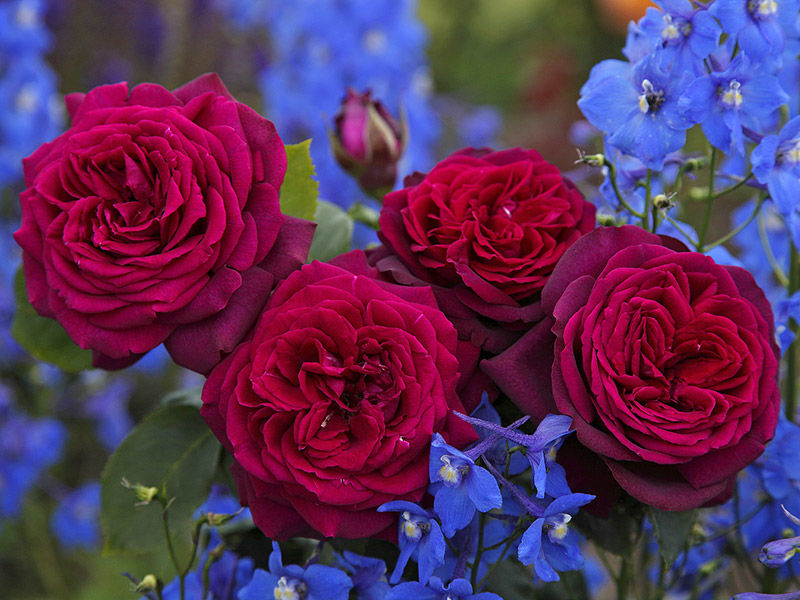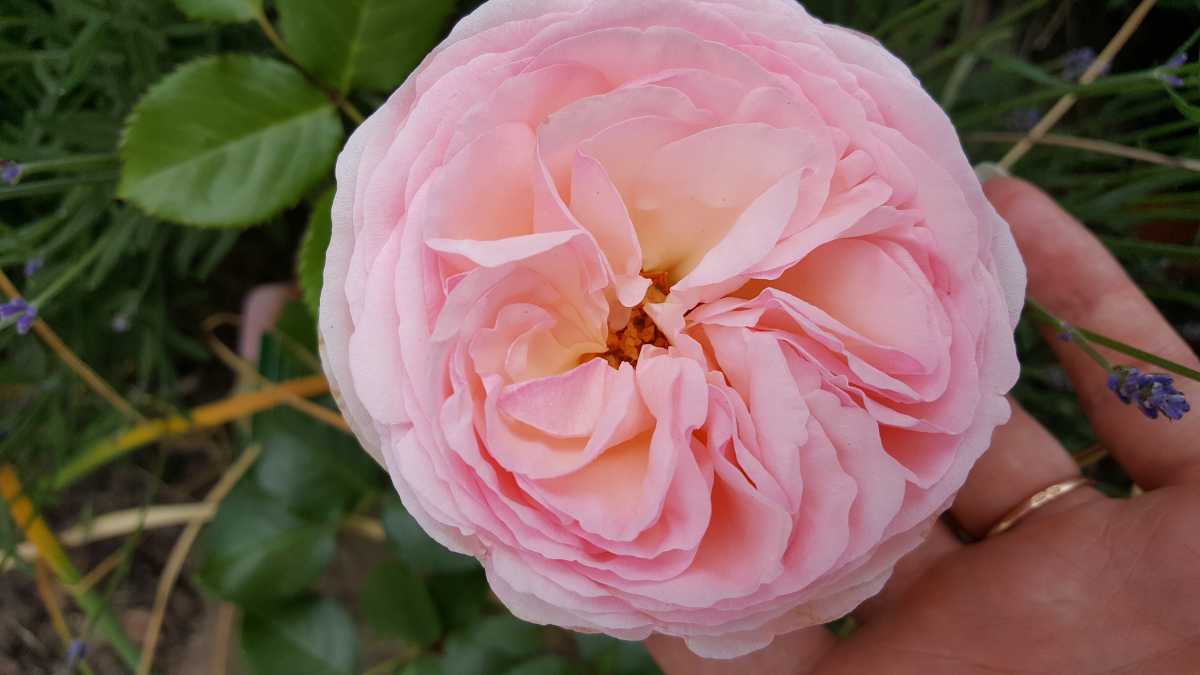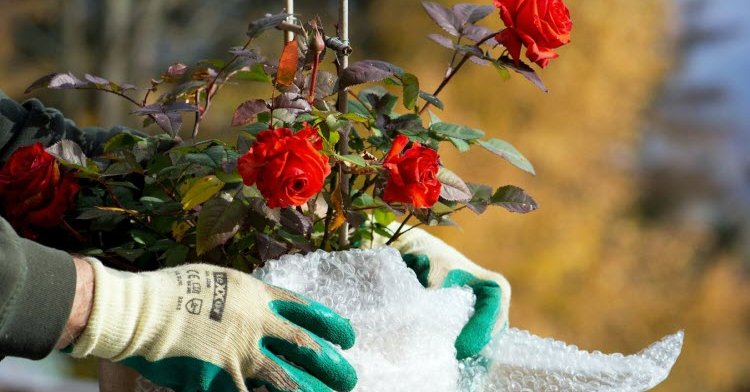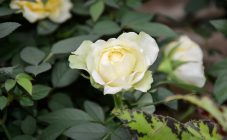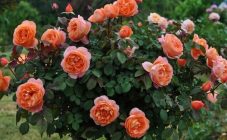Content:
Any novice gardener who wants to grow roses will sooner or later have a question "What is a scrub rose?" Today, there are many varieties of them. Given the unpretentiousness and ease of care, the cultivation of these plants is within the power of both professionals and amateurs. Scientists have made every effort and talent to create a rose bush that can withstand severe frosts. That is why this type of rose can easily grow in any, even the most severe climate on the territory of Russia.
Roses shrabs - what are they?
A person who speaks English can easily determine the meaning of the word "shrub": in translation it simply means "shrub". This definition in relation to roses appeared relatively recently - around 1965. There are completely non-fictional legends about the endurance and resistance to frost of this type of rose. So, the Canadian variety of shrab, described for the first time in the 70s of the last century, is capable of withstanding low temperatures - down to -40 ° C.
Scrub roses are considered park roses. Plants that have not found their place in other groups, but have a high frost resistance, are also automatically classified as scrub plants. The main criterion is the endurance of harsh weather conditions, namely low subzero temperatures. Another characteristic was the decorativeness of the species: there are many varieties in shape (can be small, large, growing in breadth, looking like a fountain) and color.
The translation from English "bush rose" does not convey any distinctive features of the species, since any rose grows in the form of a bush. The variant using the English word came from Europe and was successfully adapted in Russian as a term. But the form still has its own characteristics, when describing it, the following should be highlighted:
- all varieties of scrubs are bush-shaped;
- rich palette of colors;
- this species includes many varieties, from tea hybrids to constantly blooming floribunda roses;
- noteworthy is the persistent pleasant aroma of buds, which has different subtle accents;
- tall varieties of bushes can grow up to 2 meters;
- get along well with other types of roses and various garden flowers;
- the main distinguishing feature is frost tolerance.
What is the difference between scrubs and park and other varieties of roses
Scabs are not afraid of any frosts, therefore they have found distribution in the northern regions of Russia, where survival is simply impossible for ordinary roses because of their thermophilicity.
The forms of their flowers and the variety of colors of roses are not inferior to the rest of their relatives, such as park roses, floribunda, grandiflora, hybrid tea varieties. They have no less decorative value, and have found their adherents among landscape designers who successfully decorate park areas, garden beds and other places with them.
Caring for scrubs is more laborious and requires considerable physical effort, for example, pruning bushes, watering them.But the energy costs are quite justified: plants take root much easier and are very hardy to various types of diseases.
Variety of species and varieties
Shrabs have their own subgroups:
- Nostalgic shrubs. These include varieties of English, French and German landscape roses as well as landscape roses. One of the popular varieties in this subgroup, for example, is William Shakespeare 2000, which is part of the Austin nostalgic scrubs series.
- Canadian roses are semi-climbing. They have a particularly high frost resistance - up to -40 ° C. Cuthbert Grant is the most famous variety.
- Ground cover, or creeping country scrubs. This subgroup differs sharply from the others in that it has lashes spreading creeping along the ground. Bushes can be both small and large, large-flowered and with small buds. The Summer Morning variety is often used for border decoration.
Rose Sapphire
Tall (up to 1 m 30 cm tall) straight bush with double flowers from lilac to blue. The buds look like porcelain, they have translucent petals that have a delicate unobtrusive smell. Saphir roses are disease-resistant, but can be damaged by powdery mildew in adverse conditions. The variety can be easily combined with different types of perennial flowers.
Rose Countess Diana
It bears the name of the famous fashion designer Countess Bernadotte. The bushes reach a meter in height, abundant flowering with large purple shades of buds up to 10 cm in diameter with a fruity-floral aroma. Grafin Diana roses attract attention with glossy greenery. They are resistant to disease and cold.
Rose Friedenslicht shtamb
Flowers with strong double petals, not afraid of heavy rains. A special feature is a change in color: at the beginning of flowering - a light orange or apricot color, later it changes to a shining white hue. Friedenslicht roses are not afraid of powdery mildew and spotting, they have a delicate scent. Pleasing with long repeated flowering.
Scrub Magnet
A classic park representative, not demanding in care, with good winter hardiness and pronounced decorative abilities. Suitable for cultivation in backyard gardens.
Planting shrubs: how to do it right
The best time for planting is spring, but autumn is not excluded. For novice gardeners, spring is more suitable because it is a great opportunity to trace the growth and development of a plant from the very beginning.
Stages of preparatory work before planting bushes:
- Two weeks before planting, it is necessary to prepare the soil: dig up and feed it with compost or peat fertilizers.
- The hole for the bush is dug by its size, as a rule, about 50x50x50, the depth may be greater (depending on the root).
- The dug hole is one-third filled with soil and is well fertilized.
- After soaking the soil, the plant is located vertically in the center of the hole, the roots must be straightened and covered with earth.
- The base of the plant must be tamped and watered abundantly with plain water.
Watering scrubs
For better growth and development, this type of roses needs, if not frequent, but regular watering with simultaneous potassium-phosphorus and calcium dressing. Favorable time - morning or evening. In hot weather, this procedure should be performed at least once a week.
Do I need insulation for the winter
For all its endurance to low temperatures, a frost-resistant scrub still needs insulation.If in the southern regions it is enough to pay attention to the roots of the plant, covering them with sawdust or fallen leaves, then in the more northern parts this will not be enough. It will take the construction of a shelter for the bush itself in the form of a greenhouse from a suitable material.
Shrub pruning
Pruning roses is an essential prerequisite for their health and longevity. The main pruning is necessary during preparation for the winter period: young shoots are removed, which retain a large amount of moisture, which will transform into ice at sub-zero temperatures and damage the plant.
It is necessary to remove green leaves and remaining buds, as well as all branches that are damaged by any disease (this will save the bush from fungal growth in a closed greenhouse). The shoots weaving from below are simply enough to carefully lay and cover with the root. Only long straight branches are left, because it is in them that all the strength and power of the bush is concentrated for growth and flowering.
Spring pruning is equally important. All damaged areas must be removed. The longest main shoots are pruned by one quarter, and those that extend to the sides are shortened by one third.
After 3 years, adult roses need rejuvenation. To do this, at the very base, all old branches are removed, opening the way for the young, who will have time to get stronger and form a full-fledged rose bush before winter.
Disease prevention
The endurance and firmness of the bushes does not mean that they are not subject to any diseases at all. Yes, and for pests, they still have not come up with a panacea.
Roses scrubs can be threatened by all those misfortunes that are characteristic of other garden flowering plants, they are just more hardy and easier to tolerate diseases. Diseases are detected by a simple way of regular examination.
Preventive measures are best taken in the spring and fall. For spring procedures, spraying or pouring a bush (before the buds open on it) with copper sulfate (three percent solution) is suitable. In the autumn, ferrous sulfate is used in a one percent solution.
Shrubs are ideal for novice gardeners or just lovers of rose gardens: they are frost-resistant, have a strong immunity to powdery mildew and black spot, which so often affect other varieties of roses, are unpretentious in maintenance, look very impressive on a garden plot, and grow quickly.
